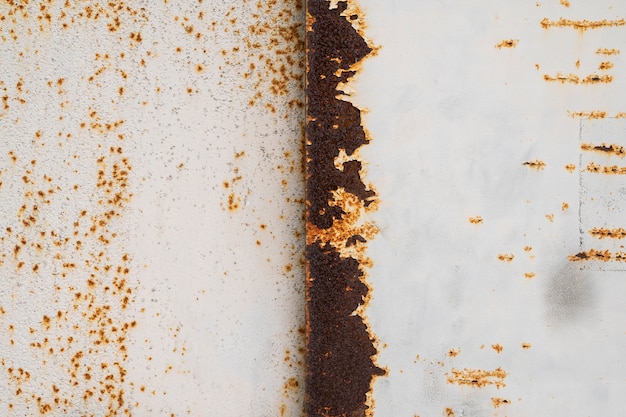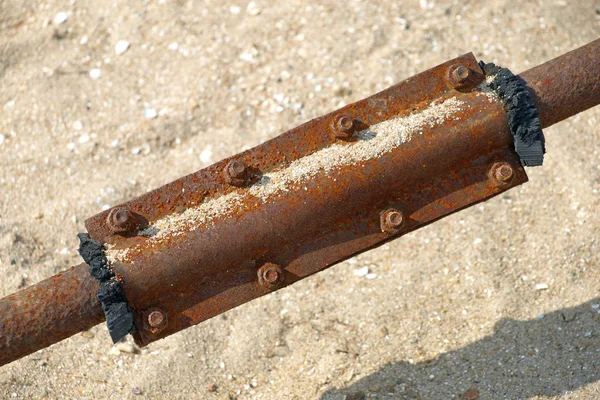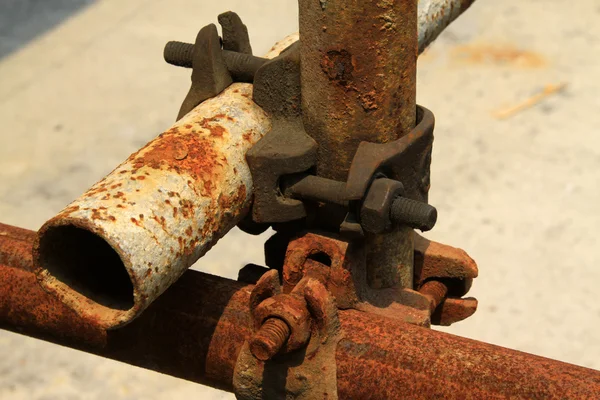Rust Inhibitors Unleashed: Safeguarding Your Investments From Corrosion
In the battle against corrosion, rust inhibitors emerge as potent warriors, safeguarding your investments from the relentless onslaught of decay. Whether you're protecting industrial machinery, vehicles, or infrastructure, the menace of corrosion lurks, threatening longevity and functionality. However, with the advent of advanced rust inhibitors, the narrative is changing. This article delves into the realm of rust inhibitors, exploring their mechanisms, applications, and the pivotal role they play in preserving your assets.
Understanding Corrosion
Corrosion is a natural process where metals react with their environment, leading to deterioration over time. Factors like moisture, oxygen, and pollutants accelerate this process, weakening metal structures and compromising their integrity. Corrosion poses significant challenges across industries, impacting safety, performance, and financial sustainability. Effective corrosion prevention strategies, such as the use of rust inhibitors, are essential for preserving assets and ensuring longevity.
The Rise of Rust Inhibitors
Rust inhibitors have emerged as vital tools in the battle against corrosion, offering protection for various metal assets. Through passivation, film formation, and electrolyte modification, they disrupt corrosion processes, extending the lifespan of machinery and infrastructure. Their application spans industries like automotive, marine, and construction, where they mitigate the economic and safety risks posed by corrosion. Continual advancements in rust inhibitor technology promise even more effective protection against the pervasive threat of rust.

Mechanisms of Rust Inhibition
Passivation:
Passivation is a corrosion prevention technique where a protective oxide layer forms on the surface of certain metals, such as stainless steel and aluminum. This oxide layer acts as a barrier, preventing further corrosion by blocking the interaction between the metal and its environment. Passivation enhances the inherent corrosion resistance of metals, prolonging their lifespan and ensuring structural integrity. It is a widely utilized method in industries where metal components are exposed to harsh environmental conditions.
Film Formation:
Film formation is a corrosion protection method where rust inhibitors create a thin, impermeable layer on metal surfaces. This film acts as a barrier, shielding the metal from corrosive elements like moisture, oxygen, and chemicals. By preventing direct contact between the metal and its environment, film formation inhibits corrosion and extends the lifespan of metal assets. This technique is commonly employed in various industries to protect machinery, infrastructure, and equipment from degradation.
Electrolyte Modification:
Electrolyte modification is a corrosion prevention approach where rust inhibitors alter the composition of the surrounding electrolytes. By adjusting the ionic conductivity, they disrupt the electrochemical processes driving corrosion. This modulation impedes the corrosion reactions, effectively slowing down the degradation of metal surfaces. Electrolyte modification is a valuable strategy employed in industries to enhance the longevity and performance of metal assets exposed to corrosive environments.

Applications Across Industries
The versatility of rust inhibitors renders them indispensable across a spectrum of industries:
- Automotive: In the automotive sector, rust inhibitors play a crucial role in protecting vehicle chassis, frames, and components from corrosion, especially in regions prone to salt or moisture exposure.
- Marine: Given the corrosive nature of seawater, marine equipment and vessels rely heavily on rust inhibitors to prevent degradation and maintain operational efficiency in maritime environments.
- Oil & Gas: Pipelines, storage tanks, and offshore platforms in the oil and gas industry face constant exposure to corrosive substances. Rust inhibitors help preserve these critical assets, ensuring safety and reliability in energy production and distribution.
- Construction: Infrastructure projects, including bridges, buildings, and transportation networks, benefit from the application of rust inhibitors to prolong service life and minimize maintenance costs.
Advancements in Rust Inhibitor Technology
Recent years have witnessed significant advancements in rust inhibitor formulations, driven by innovation and research. Key developments include:
Environmentally Friendly Formulations:
Environmentally friendly formulations in rust inhibitors prioritize biodegradable compounds and eco-friendly production processes. These formulations aim to reduce environmental impact while maintaining effective corrosion protection. By minimizing the use of harmful chemicals and promoting sustainable practices, environmentally friendly rust inhibitors contribute to a greener and more sustainable future. Industries increasingly adopt these formulations to align with environmental regulations and corporate sustainability goals.
Multi-Functional Inhibitors:
Multi-functional inhibitors combine corrosion protection with additional beneficial properties such as lubrication, water displacement, and surface cleaning. These versatile formulations offer comprehensive protection while addressing various maintenance needs. By consolidating multiple functions into a single product, multi-functional inhibitors streamline maintenance processes and reduce the need for multiple treatment steps. Industries embrace these inhibitors for their efficiency, cost-effectiveness, and convenience in preserving metal assets.
Smart Coatings:
Smart coatings integrate corrosion-sensing capabilities, detecting early signs of corrosion on metal surfaces. When corrosion is detected, these coatings trigger the release of corrosion inhibitors, providing proactive protection against degradation. By offering real-time monitoring and targeted intervention, smart coatings minimize the risk of corrosion-related damage and extend the lifespan of metal assets. Industries leverage smart coatings in critical applications where early detection and prevention of corrosion are paramount. Visit us at australianinhibitor.com.au for more details.
Challenges and Future Directions
Challenges in rust inhibition include compatibility issues, application complexities, and evolving corrosion threats. Future directions focus on addressing these challenges while exploring novel approaches such as nanotechnology and predictive modeling. By enhancing compatibility, simplifying application processes, and staying ahead of emerging corrosion risks, the field aims to improve the effectiveness and sustainability of rust inhibition strategies. This ongoing innovation ensures continued protection for metal assets across diverse industries.

